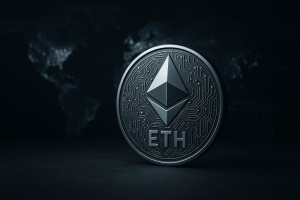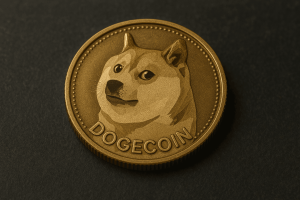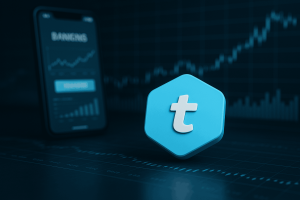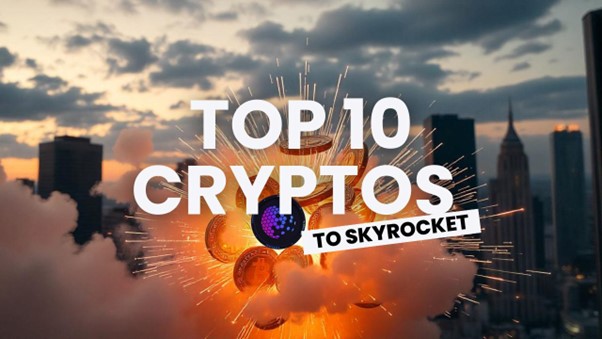The coins that’ll skyrocket and make it to 2026? They’re not about quick flips. They’re about long-term value. They solve problems. They create new markets. They don’t just sit there and hope.
People laughed when virtual land became a thing. “You’re paying for air,” they said. But now? Now some of that air is worth millions. In Decentraland, a single plot of virtual land sold for $2.4 million. In The Sandbox, Adidas and Snoop Dogg bought parcels of land. One plot next to Snoop went for $450,000.
You heard that right. Someone paid almost half a million to be Snoop’s neighbor. In pixels. Why? Because it’s not just land. It’s space with value. It’s a place where you can build shops, launch digital events, sell NFTs, and even run ads.
Now imagine this. You buy a piece of land today on a platform that’s still under the radar. It becomes the next Decentraland or Sandbox. In 2026, major brands will start flocking there. You’re not just an early adopter, you’re a landlord in the metaverse.
That’s why virtual land projects with utility, where people can build, play, or earn, have massive potential.
It’s the internet’s version of buying Manhattan in 1600 for a few bucks and a handful of beads.
The recent crypto crash? Yeah, it hurts. Everyone looked at their wallets and thought: “Maybe I should’ve just stuck with real estate, or I don’t know… Tomatoes?” But the truth is, every crash clears the noise. It wipes the hype, it burns the fluff, and it leaves room for the smart ones to enter.
This is where it gets interesting. Because now? Now’s the perfect time to position yourself. Not with memes. Not with vibes. But with something real. Something that can last. Something that actually does something. You know, a crypto that behaves like a business, not like a casino chip.
And here’s where most people go wrong : They see the crash, get scared, and run. But the ones who made money in 2017? They were bought in 2015. The ones who retired in 2021? They were bought in 2018. So, logically, the ones who’ll be smiling in 2026? They’re buying right now, in 2025.
In 2017, you could toss a dart at a list of altcoins and probably 10x. Not anymore. Now? Everyone is smarter. Everyone has a portfolio. Everyone is comparing whitepapers. Everyone is acting like a VC. That means you can’t just jump into any project. You need to move strategically.
And what’s the most strategic move? Find something early. Find something real. Hold it like your future depends on it. Would you buy a house made of Lego? No? Then why are you buying meme tokens with no utility? You wouldn’t buy a business with no product, no market, no team, and no roadmap. So why do people do that with crypto?
If you want something that can skyrocket, it needs to be something that can last. That means:
- A working product.
- A real market.
- A reason for people to keep using it.
- A team that’s not anonymous and hiding in Telegram.
Top 10 Cryptocurrencies That Could Explode in 2025 :
- EarthMeta
- Ethereum
- Dogecoin
- Telcoin
- Degen
- Bonk
- SushiSwap
- Sui
- Cetus Protocol
- Just a Chill Guy
1. EarthMeta ($EMT)

Imagine going back in time and buying land in New York, Tokyo, or Dubai, before anyone knew how valuable it would become. That’s what EarthMeta is offering, right now, in digital form.
At the center of it all is EarthMeta Token (EMT), the token behind the world’s first metaverse that mirrors real Earth cities and powers a fully AI-driven economy. EMT is live, active, and integrated into every part of the platform: from staking and payments to governance and decision-making. It’s not theoretical, it’s functional.
But here’s what makes this moment different: city NFTs are currently under offer, and EMT holders get 15% off. With every city mapped 1:1 to the real world, and just 150,000 total, these NFTs are limited, strategic, and in some cases, already worth millions. Seriously, some cities that were purchased for a few hundred dollars are now listed for over $3 million on the marketplace.
When you own a city, you don’t just hold a digital item. You earn 1% of all transaction volume that happens within your city. The more activity in your area, the more you collect. And once features like city-based staking pools roll out, the earning potential gets even deeper.
EMT is the fuel. It’s how users stake, vote, unlock advanced features, and gain early access to city drops and updates. The staking rewards are already competitive, but what makes EMT especially powerful is its connection to real digital infrastructure. This isn’t about hype cycles, it’s about building a functioning economy, powered by scarcity, AI, and utility.
EarthMeta also taps into AI to guide users toward smarter decisions. From market insights and ownership trends to real-time predictions, users are empowered to buy better, manage more effectively, and position themselves early.
And then there’s the AR layer. Open the app, walk your street, and see the cities you own, alive in your environment. It’s immersive, intuitive, and very real.
So when people talk about “1000x potential”, this is exactly what they mean: a live, working project, with limited high-value digital real estate, real incentives, and a token (EMT) that powers everything.
2. Ethereum ($ETH)

Ethereum (ETH) is a decentralized open-source blockchain platform that allows for the execution of decentralized smart contracts and serves as the foundation for numerous other cryptocurrencies. It was first proposed by Vitalik Buterin in 2013 and later funded through a public crowd sale in 2014, raising $18.3 million in Bitcoin. Ethereum officially launched in 2015, and since then, it has undergone several key updates, including the “Constantinople” and “London” forks, enhancing its scalability and functionality. Ethereum’s primary goal is to provide a global platform for decentralized applications (dApps), making it resistant to censorship, fraud, and downtime.
Ethereum’s development was spearheaded by a group of eight co-founders, with Vitalik Buterin being the most recognized for authoring the original white paper. Other key figures include Gavin Wood, who developed Ethereum’s first technical implementation and proposed the Solidity programming language, and Joseph Lubin, who founded the blockchain incubator ConsenSys. Together, they created Ethereum to allow anyone to build and run decentralized applications, contributing to the broader movement of decentralization in blockchain technology.
Ethereum’s decentralized nature and the ability to create and execute smart contracts have paved the way for countless innovations, including decentralized finance (DeFi) platforms, NFTs, and more. The Ethereum ecosystem continues to evolve, with ongoing updates aimed at improving transaction speed, reducing costs, and increasing scalability, solidifying its position as one of the most significant and influential blockchain platforms in the world.
3. Dogecoin ($DOGE)

Dogecoin (DOGE) is a cryptocurrency inspired by the popular “doge” meme featuring a Shiba Inu. It was created in December 2013 by Billy Markus from Portland, Oregon, and Jackson Palmer from Sydney, Australia. Forked from Litecoin, Dogecoin was designed to be a fun and light-hearted alternative to Bitcoin, with the aim of appealing to a broader audience. Notably, Tesla CEO Elon Musk has publicly stated that Dogecoin is his favorite cryptocurrency, boosting its popularity.
Unlike Bitcoin’s proof-of-work protocol, Dogecoin uses Scrypt technology and features a 1-minute block time. Its total supply is uncapped, meaning there’s no limit to how much Dogecoin can be mined. Mining Dogecoin can be done solo or by joining a mining pool, and it is compatible with Windows, Mac, and Linux systems. Additionally, Dogecoin can be mined alongside Litecoin due to the merged mining process introduced in 2014.
Dogecoin has primarily been used as a tipping system on platforms like Reddit and Twitter, where users can reward others for creating or sharing quality content. It can be acquired by participating in communities that use Dogecoin or through a Dogecoin faucet, which gives small amounts of the coin for free to introduce new users to the currency.
4. Telcoin ($TEL)

Telcoin (TEL) is the native token of the Telcoin decentralized financial platform, which aims to provide users with access to fast and affordable financial products through mobile phones. The platform operates on blockchain technology and facilitates a wide range of decentralized financial services, including remittances, digital asset exchanges, and mobile financial services. The Telcoin ecosystem aligns the incentives of telecom providers, mobile network operators, and users, to create a user-owned financial system accessible to billions of mobile phone users globally.
Founded in 2017 by Paul Neuner, Telcoin aims to bridge the gap between traditional financial systems and decentralized finance (DeFi) by leveraging the telecom industry. Telcoin’s first major product was Telcoin Remittances, a platform that facilitates low-cost, high-speed digital money transfers to mobile money platforms. The platform has since expanded to introduce products like the Send Money Smarter Network (SMS) and TELxchange, a decentralized digital asset exchange. Telcoin operates globally, with regulatory approvals in markets like Singapore, Canada, and Australia.
What sets Telcoin apart is its focus on integrating decentralized finance into the telecom sector. By tapping into the existing network of telecom providers, Telcoin aims to offer superior financial services directly to mobile phone users, bypassing traditional banking systems. The maximum supply of Telcoin (TEL) is capped at 100 billion tokens, with approximately half of them already issued. As an ERC-20 token on the Ethereum blockchain, Telcoin ensures secure transactions, with users benefiting from a multi-signature Ethereum wallet for added safety.
5. Degen ($DEGEN)
Degen (DEGEN) began as a reward token for participants in the Farcaster Degen channel, originally launched as a meme coin. Over time, it has grown in popularity and now boasts a strong following of developers, crypto content creators, and enthusiasts who have embraced the token. This shift from meme to serious asset has led to its increasing presence within the crypto community.
During its initial launch, 15% of the total DEGEN supply was airdropped to active members of the Farcaster Degen channel, helping to foster initial support and participation. The token quickly gained traction, and its community continued to expand, fueling its growth and establishing its presence within the broader crypto landscape.
Looking ahead, there are plans to airdrop 70% of the token’s total supply, ensuring that it remains accessible to a wide audience. This distribution model plays a key role in Degen’s growth, creating an ecosystem where the community remains actively engaged in both the token’s development and its ongoing adoption.
6. Bonk ($BONK)
Bonk (BONK) is a dog-themed cryptocurrency built on the Solana blockchain, designed to engage the community with a “for the people, by the people” ethos. Launched on December 25, 2022, it quickly garnered attention due to its airdrop strategy, with 50% of the total supply distributed to the Solana community. This move triggered a significant 34% rise in the price of the SOL token within just 48 hours. The token’s appeal is similar to other meme coins like Shiba Inu (SHIB) and Dogecoin (DOGE), and its trading began shortly after, sparking increased interest from the broader crypto space.
The core aim of the Bonk team is to revitalize Solana-based decentralized exchanges (DEXs) and create a community-driven token that would be used across various dApps on the Solana blockchain. The project seeks to ensure that every user has the opportunity to participate in the ecosystem, aligning with the decentralized nature of Web3. To kickstart its adoption, Bonk was airdropped to Solana NFT collectors, developers, and artists, though further details on the airdrop process remain unclear.
What sets Bonk apart is its unique distribution model. With 50 trillion coins allocated to Solana contributors, the project has cultivated strong community engagement. Its airdrop generated over $20 million in trading volume, and after being listed on several crypto exchanges, Bonk experienced a staggering 2,000% price surge within its first week. Despite the anonymity of the development team and the absence of a formal whitepaper, the project has emerged as one of the best-performing crypto assets in early 2023.
7. SushiSwap ($SUSHI)
SushiSwap (SUSHI) is a decentralized exchange (DEX) that functions as an Automated Market Maker (AMM) across more than 40 blockchain networks, providing users with the ability to swap tokens and offer liquidity without the need for traditional order books. The platform’s native token, SUSHI, grants holders governance rights and a share of the transaction fees, fostering decentralized decision-making within the Sushi DAO. SushiSwap’s broad reach and competitive pricing make it an attractive option for traders and liquidity providers, offering extensive liquidity access and smart liquidity solutions to optimize user experience.
SushiSwap stands out for its innovative approach to decentralized finance (DeFi) through its multi-chain ecosystem. With over 40 chains supported, the platform allows users to engage in cross-chain swaps via SushiXSwap, which facilitates token exchanges across 15 different networks. SushiSwap’s aggregation infrastructure ensures optimal pricing, competitive routes, and swap protection for users, making it a robust and secure platform for decentralized trading.
The platform offers advanced tools for liquidity providers, such as Smart Pools and detailed analytics, enabling users to manage their liquidity more efficiently. SushiSwap has also contributed to DeFi innovation with projects like xSushi and Blade, which enhance the platform’s functionality and scalability. With its diverse offerings and strategic partnerships, SushiSwap continues to solidify its position as a leading force in the multi-chain DEX space.
8. Sui ($SUI)
Sui is an innovative layer-1 blockchain platform designed to support global adoption with its secure, scalable, and powerful infrastructure. The platform utilizes a unique object-centric data model and the Move programming language to address inefficiencies common in existing blockchain systems. Sui focuses on user experience by removing traditional barriers in blockchain interactions, offering features like zkLogin, sponsored transactions, and programmable transaction blocks to improve Web3 accessibility and usability.
Sui was developed by Mysten Labs, founded by former lead architects of Meta’s blockchain research team. The leadership includes Evan Cheng, CEO, with over 24 years of experience in platform development, including roles at Apple and Facebook; Adeniyi Abiodun, CPO, who led product teams at major tech companies like Oracle, VMware, and Facebook; Sam Blackshear, CTO, creator of the Move smart contract language; George Danezis, Chief Scientist, an expert in peer-to-peer system security and privacy; and Kostas Chalkias, Chief Cryptographer, with over 10 years of experience in cryptography.
What sets Sui apart is its object-oriented design, enabling parallelized execution and horizontal scaling, leading to low-latency transactions, high throughput, and stable fees. The platform empowers developers with tools to create Web3 applications efficiently, with a focus on deep composability, user safety, and fast transaction processing.
Sui’s Move language is tailored to the platform’s architecture, providing enhanced security and mitigating common vulnerabilities in other smart contract languages. With features like zkLogin for seamless onboarding and Sui Wallet, users can easily interact with the platform while maintaining control over their digital assets and security.
9. Cetus Protocol ($CETUS)
Cetus Protocol is a decentralized exchange and liquidity protocol built on the Sui and Aptos blockchains. It utilizes the Concentrated Liquidity Market Makers (CLMM) model, inspired by Uniswap V3 and Trader Joe, to provide advanced trading and liquidity solutions. By adopting this innovative approach, Cetus aims to improve trading experiences and optimize liquidity efficiency for decentralized finance (DeFi) users. The protocol’s permissionless nature allows anyone to participate, set up trading pools, or rent liquidity, making it accessible and flexible for a wide range of users.
One of the key features of Cetus is its programmability, enabling users to create complex trading strategies using combinations of swaps, range orders, and limit orders. Liquidity providers can take advantage of Maker strategies within the CLMM framework to maximize their efficiency. This programmability and flexibility make Cetus a powerful tool for DeFi traders and liquidity providers looking to enhance their trading strategies and optimize their returns.
Cetus also promotes composability with its “Liquidity As A Service” model, allowing developers to integrate its liquidity into various DeFi products such as liquidity vaults, derivatives, and leveraged farming. The platform’s SDK makes it easy for new projects to integrate with Cetus and access its liquidity and the broader market. With its double-token model (CETUS and xCETUS) and partnerships with LayerZero Labs and Fewcha Wallet, Cetus ensures sustainable long-term growth and incentivization for active participants in its ecosystem.
10. Just a Chill Guy ($CHILLGUY)
The “Chill Guy” is a new meme character that embodies an ultra-relaxed, carefree attitude. His persona is all about being “lowkey” — maintaining a calm and casual demeanor without getting worked up about anything. The character’s relaxed approach to life makes him a perfect fit for the meme culture, where humor often comes from exaggerated and carefree attitudes.
In the illustration, the Chill Guy is depicted wearing a grey sweater, blue jeans, and red shoes, perfectly capturing his laid-back vibe. His smirk adds to his cool, indifferent persona, and the fact that he keeps his hands in his pockets shows that he’s not worried about anything around him. The simplicity of his style and expression reflect his easygoing nature, which resonates with meme enthusiasts everywhere.
People across TikTok and other platforms have embraced the Chill Guy as the best new meme character, appreciating his cool and “whatever” attitude. His character has taken off because of how relatable and carefree he feels in contrast to the often chaotic world we live in. His laid-back nature serves as a reminder to just relax and not take things too seriously.
Conclusion
You’ve seen the patterns. You’ve heard the stories. You’ve read the data. The coins that explode, like really explode, they’re rarely the ones trending on Twitter for a week and then vanishing into the crypto void. The real winners are the ones that stick around, build through the noise, and come out stronger after every dip.
This isn’t about gambling. It’s about positioning. Positioning yourself early. Intentionally. With projects that actually do something. Because let’s be honest, anyone can YOLO into a coin and hope for the moon. But hope isn’t a strategy. Research, timing, and choosing real utility? That’s where the 1000x lives.
2025 is the year to act like the people who made it in 2021. And guess what? They weren’t chasing trends. They were accumulating when everyone else was distracted. While others laughed at virtual land, they were buying up blocks next to Snoop Dogg. While others complained about the crash, they were collecting virtual lands on platforms like EarthMeta, locking in rewards, access, and power.
Which crypto will go high in 2025?
While no one can predict with certainty which cryptocurrency will perform best, EarthMeta ($EMT) might emerge as a strong contender in 2025. With its focus on combining blockchain technology with the metaverse, EarthMeta has positioned itself at the intersection of two rapidly growing industries. Its decentralized governance, robust NFT marketplace, and innovative approach to virtual real estate could attract more participants and investors, potentially driving its value higher as adoption increases.
What crypto will hit $1?
EarthMeta ($EMT) could be among the cryptos with the potential to reach or surpass $1, depending on the platform’s growth and the expansion of its user base. As EarthMeta continues to enhance its ecosystem with new features and integrates more advanced technologies, such as augmented and virtual reality, the value of $EMT might increase. Additionally, its unique offering of digital city ownership and an evolving metaverse economy could boost demand for the token, making $1 a realistic milestone.
![]()



